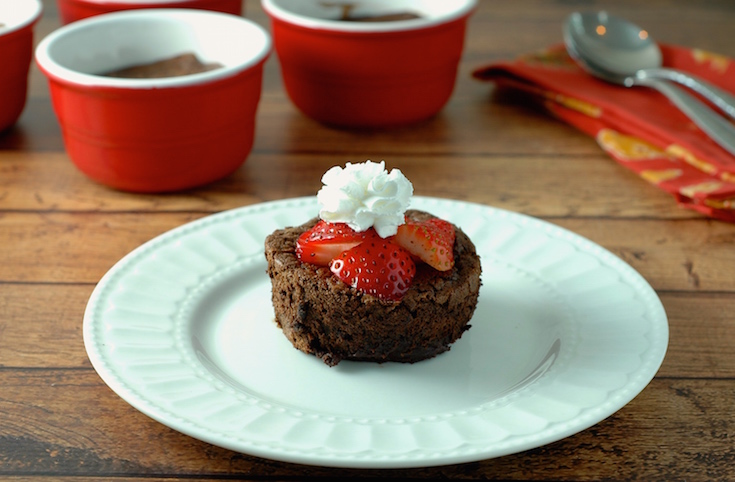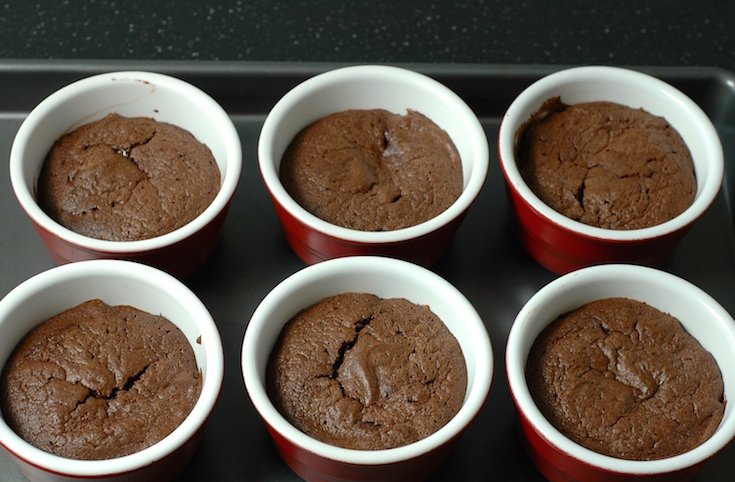Every spring Passover week arrives, and with it comes the endless parade of desserts that can be described as meh at best. This year was no different. As I sat down to my family’s Passover meal a week ago, I was secretly bemoaning the absence of a dessert that I would actually want to eat the other fifty-one weeks of the year.
For those of you unfamiliar with my lament, a little background on the rituals involved in the Jewish holiday of Passover is in order.
As you may know, Passover is the time that Jews commemorate the Exodus story, largely by reenacting the experiences of the Israelites as they fled Egypt. One of the most important ways we do this is by not eating chametz, which is anything that contains even a trace of grain — such as wheat, barley, rye, oats and spelt — that could be leavened. Of course, this means no pasta, bread, or cereal during the week of Passover. It also means no desserts containing flours made from any of these grains.
Instead, Jews observe Passover by eating matzah, which is flat unleavened bread, and foods containing matzah in the form of crumbs and finely ground meal. If you were in any supermarket the last few weeks, you may have seen shelves piled high with these products. Red velvet cake with matzah meal, brownies with matzah meal, apple crumb cake with matzah meal. The list is endless. Unfortunately, all of these choices come in boxes that were filled who knows when, they’re all highly processed, and, frankly, all are woefully lacking in the “I definitely want to eat this again” department.
So, what to do? Well, quite a few years ago I concluded that a recipe rarely succeeds when you try to change it by replacing a key ingredient with a poor imitation of itself. Using fat-free cheese in place of full-fat cheese is a good example of this often-tried approach. Let’s say you want to lighten a baked pasta dish. The original recipe calls for cheese with some fat (usually full-fat), but you’ve always heard that fat is bad for you (which is not exactly true, but that’s the subject of a different post), so you want to eliminate it by using fat-free cheese. Unfortunately, what you end up with is a dish that is dry and rubbery and not very good-tasting. It turns out that fat is necessary for cheese to melt properly and give it the creamy mouthfeel that makes baked pasta dishes so appealing.
I think a better approach would be to use cheese with at least some fat but to make other changes, such as to replace some of the cheese with a lighter bechamel sauce, which adds its own creaminess to the dish, or to load up on other healthier options such as veggies and flavor enhancers such as herbs and spices. Those changes aren’t trying to make the dish what it isn’t. Instead, they are contributing to a whole new dish that may be reminiscent of the original one but has its own unique qualities and appeal.
This year I decided to follow the same approach with Passover desserts. Rather than replacing a recipe’s original flour with matzah meal, which in my experience always results in a meh dessert, I decided to experiment with some desserts that are naturally flour-free. After several false starts, I settled on a sophisticated but surprisingly easy recipe for a flourless chocolate soufflé cake from Fine Cooking. The base of the cake consists of four ingredients — chocolate, butter, eggs, and sugar. Some additional flavor is added with a little cocoa and, if desired, some flavored extract.
The original recipe also included a molten center made with espresso-chocolate sauce, but I found the process of making it a little too complicated for me, plus I wanted to make it more kid-friendly by eliminating the extra caffeine added by the espresso. Instead, I substituted a filling of chocolate ganache that I first developed for my Chocolate Ganache & Strawberry Jam on Toast. While the centers of my cakes may not be as runny as those in the original recipe, they were still soft and deliciously moist. The key is not to over bake the cakes (11-12 minutes should be fine), or the chocolate ganache will become more cake-like than soft.
I think you’ll find that these cakes are a delicious addition to your year-round baking repertoire, both during and after Passover.
Year-Round Chocolate Soufflé Cakes with Ganache Filling*
Since these cakes are both delicious and naturally flour-free, they’re the perfect antidote to the unexceptionalism of most Passover dessert options. I guarantee you’ll want to make them all year long.
Ganache Filling Ingredients**
4 ounces (113 grams) bittersweet chocolate, broken up into small pieces
1/2 cup (120 ml) heavy cream
1/2 teaspoon orange, vanilla, or almond extract (optional)
Cake Ingredients
4 ounces (115 grams) bittersweet chocolate, broken up into small pieces
3 tablespoons (42 grams) butter, cut into small pieces
2 tablespoons (28 grams) unsweetened cocoa powder
2 large eggs yolks
1/2 teaspoon orange, vanilla, or almond extract (optional)
3 large egg whites
1/8 teaspoon cream of tartar
3 tablespoons (42 grams) granulated sugar
Directions for Ganache Filling
1. In a double boiler, slowly heat the cream. When the cream is hot to the touch but not boiling, turn off the heat and add the chocolate pieces. Wait a few minutes to allow the chocolate to begin to melt, and then begin to stir vigorously until all of the chocolate has melted and the mixture is smooth and glossy. (You may need to turn the heat under the double boiler on again for a minute or two if the cream cools before all of the chocolate has melted.) If using, stir in the extract, and then remove the bowl from the pan with the hot water. Let cool for about 10 minutes, and then place the bowl in the refrigerator until the ganache becomes firm (about an hour).
Directions for the Cakes
2. About 15 minutes before you are ready to use the ganache, preheat the oven to 400°F (200°C). Place the chocolate and the butter in a second bowl that can be used in a double boiler and heat until the chocolate and butter have started to melt. Begin to stir vigorously until all of the chocolate and butter has melted and the mixture is smooth and glossy. If using, stir in the extract. Remove the bowl from the pan with the hot water, and then stir in the cocoa powder and egg yolks. If necessary, transfer the mixture to a larger bowl that will accommodate both the chocolate/butter mixture and the beaten egg whites (see below). Set aside.
3. Place the egg whites and cream of tartar in a clean, dry bowl. Using a mixer on medium-high speed, beat the egg whites until soft peaks*** have begun to form. Add the sugar to the bowl and then continue to beat the egg whites until stiff peaks have formed.*** (You can also beat the egg whites by hand using a whisk, but it will take longer to bring them to the appropriate consistencies.)
4. Transfer about 1/3 of the egg whites to the bowl with the chocolate mixture. Using a rubber spatula, gently fold the egg whites into the chocolate by running the spatula along the inner side of the bowl and then lifting a portion of the batter from the bottom of the bowl up and onto the top of the mixture. Continue doing this until the egg whites and chocolate are combined, taking care not to deflate the egg whites. Fold the remaining egg whites into the chocolate using this same method. Be careful not to over mix.
5. Prepare six 6-ounce (180 ml) ramekins**** by coating them with a thin layer of non-stick cooking spray. Retrieve the bowl of chocolate ganache from the refrigerator and, using a spoon, melon baller, or small ice cream scoop, place one-sixth of the chocolate ganache in the center of each of the six ramekins. Using a large spoon, divide the cake batter evenly among the ramekins, fully covering the chocolate ganache centers. If necessary, smooth the tops with the back of the spoon. Place the ramekins on a large sheet pan, and place the sheet pan in the preheated oven. Bake for 11 to 12 minutes. Remove from the oven and let cool for 15 minutes. Serve each cake with whipped cream and strawberries, if desired, either in the ramekins or on a plate.
*I made the cakes for this post using non-Passover ingredients. To make them during Passover, you’ll need to use chocolate that is kosher for Passover (the highest quality you can find). You’ll also need to find appropriate substitutes for the cream of tartar and the extracts. Alternatively, you can leave those ingredients out.
**The ganache filling will be soft, not runny like a traditional molten lava cake. I have used it here instead of the espresso-chocolate sauce filling from the original recipe because it is easier to make and use and is more kid-friendly. If you are running short on time, you can leave the filling out entirely.
***To determine whether the eggs have been whipped to the appropriate consistency, slowly lift the beaters (or the whisk if beating by hand) several inches above the egg whites and then look at the points extending upward from the egg whites in the bowl or extending downward from the beaters. Soft peaks will barely hold their shape and quickly flatten or fall off the beaters. Stiff peaks will stand straight up or down and keep their shape.
****A six-ounce ramekin will hold 3/4 cup of water. Ramekins are preferable because they give you the option of serving the cakes in them. However, you can also use a pan for large muffins. You’ll just have to be careful to maintain the shape of the cakes when you remove them from the pans.
Copyright © A Busy Mom’s Kitchen
https://abusymomskitchen.com/2015/04/11/year-round-chocolate-souffle-cakes-with-ganache-filling/











